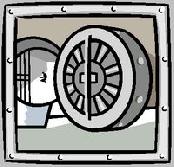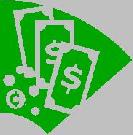
 |
|
| Financial Terms | |
| Standard costs |
|
Information about financial, finance, business, accounting, payroll, inventory, investment, money, inventory control, stock trading, financial advisor, tax advisor, credit.
Main Page: inventory, credit, business, payroll, inventory control, finance, stock trading, tax advisor, |
Definition of Standard costs
Standard costsA budget cost for materials and labour used for decision-making, usually expressed as a per unit cost that is applied to standard quantities from a bill of materials and to standard times from a
Related Terms:backflush costinga streamlined cost accounting method that speeds up, simplifies, and reduces accounting effort in an environment that minimizes inventory balances, requires Agency costsThe incremental costs of having an agent make decisions for a principal. Carring costscosts that increase with increases in the level of investment in current assets. Committee, AIMR Performance Presentation Standards Implementation CommitteeThe Association for Investment Management and Research (AIMR)'s Performance Presentation standards Implementation Execution costsThe difference between the execution price of a security and the price that would have Financial distress costsLegal and administrative costs of liquidation or reorganization. Also includes Friction costscosts, both implied and direct, associated with a transaction. Such costs include time, effort,  Gold exchange standardA system of fixing exchange rates adopted in the Bretton Woods agreement. It Gold standardAn international monetary system in which currencies are defined in terms of their gold Incremental costs and benefitscosts and benefits that would occur if a particular course of action were Information costsTransaction costs that include the assessment of the investment merits of a financial asset. Market impact costsAlso called price impact costs, the result of a bid/ask spread and a dealer's price concession. Market timing costscosts that arise from price movement of the stock during the time of the transaction Opportunity costsThe difference in the performance of an actual investment and a desired investment Price impact costsRelated: market impact costs Round-trip transactions costscosts of completing a transaction, including commissions, market impact  Search costscosts associated with locating a counterparty to a trade, including explicit costs (such as Standard deviationThe square root of the variance. A measure of dispersion of a set of data from their mean. Standard errorIn statistics, a measure of the possible error in an estimate. Standardized normal distributionA normal distribution with a mean of 0 and a standard deviation of 1. Standardized valueAlso called the normal deviate, the distance of one data point from the mean, divided by Statement of Financial Accounting Standards No. 8This is a currency translation standard previously in Statement of Financial Accounting Standards No. 52This is the currency translation standard currently Sunk costscosts that have been incurred and cannot be reversed. Trading costscosts of buying and selling marketable securities and borrowing. Trading costs include Transactions costsThe time, effort, and money necessary, including such things as commission fees and the Avoidable costscosts that are identifiable with and able to be influenced by decisions made at the business Direct costscosts that are readily traceable to particular products or services. Fixed costscosts that do not change with increases or decreases in the volume of goods or services Indirect costscosts that are necessary to produce a product/service but are not readily traceable to particular products or services – see overhead. Period costsThe costs that relate to a period of time. Semi-fixed costs costs that are constant within a defined level of activity but that can increase or decrease when Semi-variable costscosts that have both fixed and variable components. Sunk costscosts that have been incurred in the past. capitalization of costsWhen a cost is recorded originally as an increase fixed expenses (costs)Expenses or costs that remain the same in amount, overhead costsOverhead generally refers to indirect, in contrast to direct, Standard DeviationA statistical term that measures the dispersion of a variable Cost Accounting Standards Board (CASB)a body established by Congress in 1970 to promulgate cost accounting ethical standarda standard representing beliefs about moral expected standardstandard set at a level that reflects what ideal standarda standard that provides for no inefficiencies perfection standardsee ideal standard practical standarda standard that can be reached or slightly standarda model or budget against which actual results are standard costa budgeted or estimated cost to manufacture standard cost carda document that summarizes the direct standard cost systema valuation method that uses predetermined standard deviationthe measure of variability of data around standard error of the estimatea measure of dispersion that reflects the average difference between actual observations and expected results provided by a regression line standard overhead application ratea predetermined overhead rate used in a standard cost system; it can be a separate variable or fixed rate or a combined overhead rate standard quantity allowedthe quantity of input (in hours or some other cost driver measurement) required at standard for the output actually achieved for the period Standard deviationA measure of the variation in a distribution, equal to the Standard costA predetermined cost that is based on original engineering designs and carrying costscosts of maintaining current assets, including opportunity cost of capital. costs of financial distresscosts arising from bankruptcy or distorted business decisions before bankruptcy. fixed costscosts that do not depend on the level of output. shortage costscosts incurred from shortages in current assets. Standard & Poor’s Composite IndexIndex of the investment performance of a portfolio of 500 large stocks. Also called the standard deviationSquare root of variance. Another measure of volatility. sunk costscosts that have been incurred and cannot be recovered. variable costscosts that change as the level of output changes. Gold StandardA fixed exchange rate system in which a currency is directly convertible into gold. Menu CostsThe costs to firms of changing their prices. Contract Work Hours and Safety Standards ActA federal Act requiring federal contractors to pay overtime for hours worked exceeding 40 per week. Fair Labor Standards Act of 1938A federal Act creating standards of overtime Costs Capitalized in StealthA particularly egregious form of aggressive cost capitalization Policy Acquisition Costscosts incurred by insurance companies in signing new policies, including expenditures on commissions and other selling expenses, promotion expenses, premium Political CostsThe costs of additional regulation, including higher taxes, borne by large and Preopening CostsA form of start-up cost incurred in preparing for the opening of a new store or facility. Start-up Costscosts related to such onetime activities as opening a new facility, introducing Part standardizationThe planned reduction of similar parts through the standardization Standard containersCommon-sized containers that are used to efficiently move, Funding CostsThe price of obtaining capital, either borrowed or equity, with intent to carry on business operations. Undepreciated Capital CostsThe tax definition of the value of an asset that is eligible for tax deprecation. Flexible budgetA method of budgetary control that flexes, i.e. adjusts the original budget by applying standard accrual-basis accountingWell, frankly, accrual is not a good descriptive failure costa quality control cost associated with goods or variance analysisthe process of categorizing the nature (favorable or unfavorable) of the differences between standard and actual costs and determining the reasons for those differences Related to : financial, finance, business, accounting, payroll, inventory, investment, money, inventory control, stock trading, financial advisor, tax advisor, credit. |